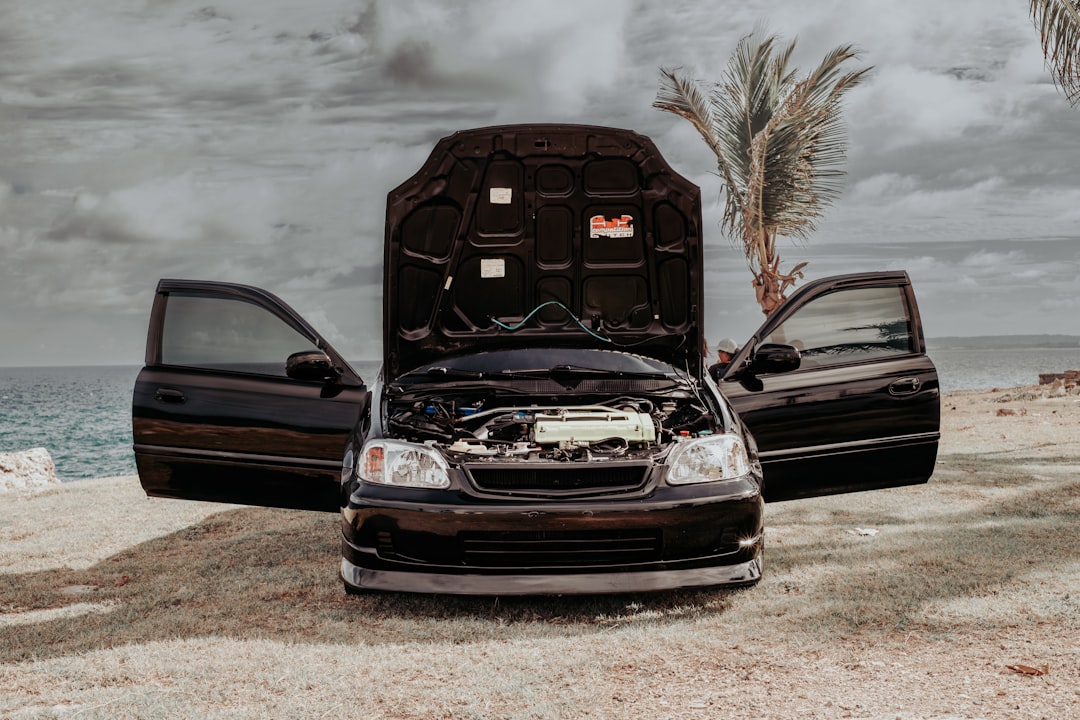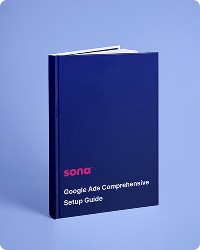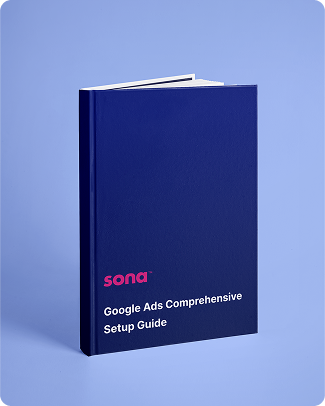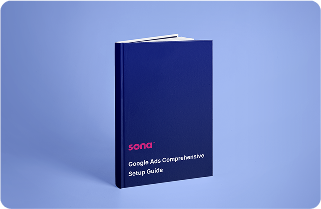

Engage prospects with a scan and streamline customer engagement with FREE QR code marketing tools by Sona – no strings attached!
Create a Free QR CodeFree consultation

No commitment

Engage prospects with a scan and streamline customer engagement with FREE QR code marketing tools by Sona – no strings attached!
Create a Free QR CodeFree consultation

No commitment
Car rental customers expect speed and simplicity at every turn, from the moment they research vehicles to the instant they return the keys. Yet many of those interactions happen offline around vehicles, counters, and printed materials, which makes them hard to capture and act on. QR codes in marketing convert these offline moments into measurable digital touchpoints that push people toward a booking, an upgrade, or a repeat rental. They also reduce friction by eliminating paper-heavy steps and unnecessary back-and-forth with staff.
To raise conversion rates, start by mapping the most common offline-to-online gaps and insert a QR interaction that removes friction while surfacing intent. Replace slow paper processes with scannable forms, point in-branch shoppers to personalized offers, and turn every vehicle and sign into a fast path to action. When you connect scan events to your CRM and analytics via the product overview, you gain visibility into high-intent behavior that previously went untracked. The result is both operational efficiency and revenue lift from better conversion, upsells, and retention.
With the right design and placement, QR codes remove bottlenecks, reveal intent signals, and support timely follow-up. They turn each interaction into a measurable step that increases the odds of a booking or an upsell, and they give operators the data needed to scale what works across the fleet and footprint.

Car rentals are uniquely physical: customers handle vehicles, keys, insurance paperwork, and counter interactions. These analog touchpoints introduce blind spots that make it hard to attribute conversions or intervene when a renter is on the fence about an upgrade. QR codes for cars close these gaps by connecting physical moments to digital actions you can track and optimize. They simplify complex choices, shorten lines, and give renters the self-service options they already expect.
The speed and simplicity of scanning is especially valuable for travelers on tight schedules. Rather than asking someone to download an app or type a long URL, a scan delivers the right content within seconds. That single moment can drive meaningful outcomes: completed check-ins without a queue, on-the-spot upgrades, or immediate feedback that saves a customer relationship.
When you embed QR codes consistently across the renter journey, you replace guesswork with insights. That visibility drives smarter investments in creative, channel mix, and on-site placements that move the needle on conversion and customer satisfaction.

Different rental scenarios call for different QR experiences. Some interactions are transactional, some are informational, and others are tied to support or loyalty. By selecting the right format for each use case, you can streamline workflows while capturing high-quality intent data.
For car rental operators, a blend of web links, forms, and messaging triggers usually drives the best outcomes. Business travelers appreciate vCards and direct contact options, while families may value how-to videos and quick access to support. Dynamic codes should be the default for most operational and marketing placements so you can update destinations as campaigns evolve.
Dynamic QR codes are the smart default for rental operations and marketing. They allow rapid destination changes to accommodate inventory shifts, campaign updates, and new safety instructions without reprinting. Static codes are best reserved for evergreen content like a generic customer care vCard or a branch’s permanent Wi-Fi credentials.

Every surface in your rental environment is an underutilized marketing asset. Vehicles, counters, shuttle buses, key wallets, receipts, parking stalls, and even fuel caps can drive valuable actions if they include a QR prompt and a clear benefit. Identifying high-traffic, high-intent moments is the first step to unlocking incremental bookings and ancillary revenue.
Think in terms of context, not just placement. A code on the dashboard can promote mid-rental upgrades or extensions, while a code at the counter can move a renter to a faster check-in flow. A code near the return lane can request a quick survey or encourage a loyalty enrollment. When you route these scans into personalized flows and track how many lead to revenue, you can double down on the placements that outperform.
By prioritizing placements where renters are already attentive and motivated, you can boost engagement and improve attribution. Over time, channel-level data will show where physical touchpoints consistently move the needle, letting you invest with greater confidence.

The rental journey includes repeated moments where small improvements create meaningful business impact. QR codes help remove friction, capture intent, and automate follow-up so that more of those moments end in conversion or loyalty.
The following use cases map to common pain points and opportunities in the rental lifecycle. They are practical to implement and easy for renters to adopt since the benefit is immediate and clear.
When embedded thoughtfully, these use cases modernize the renter experience and lift the metrics that matter most: booking completion, upsell rate, NPS, and repeat rentals. The operational gains also add up through fewer errors, less paper, and clearer data flows to your CRM.
Anonymous foot traffic and in-branch browsing often leave no digital trail, which weakens your ability to retarget likely buyers. QR scans create that missing signal. Each scan tells you something about the person’s context, intent, and stage in the journey. When you deploy multiple codes across touchpoints and tag them correctly, you can automatically segment audiences and tailor follow-up.
Start by defining segments aligned to your branches, use cases, and customer types. For example, an airport location might target business travelers who scan counter signage, while a neighborhood branch targets weekend renters who scan vehicle decals. Feed these segments into your CRM and ad platforms so marketing and sales outreach can be timely and relevant. For ad execution ideas, use Sona’s retargeting playbook.
By feeding real behavior into your data systems, you retire guesswork. You position your brand to retarget based on what customers have actually shown interest in, not on assumptions. This produces higher response rates and more efficient ad spend.
QR codes bring cohesion to a marketing mix that includes physical and digital channels. They create a measurable onramp from offline engagement to online conversion, and they help teams coordinate messaging, offers, and follow-up. For car rental marketers, this means making every brochure, counter sign, shuttle wrap, and email part of a connected journey.
A centralized platform like Sona QR improves collaboration between headquarters and branches. Marketing can maintain creative standards and destinations, while local teams place codes where they make the most sense. Real-time reporting shows which channels and placements drive results so budgets can be adjusted on the fly.
This connected approach compounds results. Every scan upgrades your customer data, every placement becomes a source of truth for performance, and every channel contributes to a cohesive conversion story that your team can scale.
A clear process helps you move from experimentation to dependable results. Use the following steps to plan, deploy, and optimize QR campaigns that improve conversions and customer experience. Where possible, centralize management and reporting in Sona QR so branches can execute while marketing retains control over destinations, tagging, and analytics.
Define the business outcome first: shorter lines at airport counters, higher mid-rental upgrades, more completed loyalty enrollments, or increased survey response rates. Select one use case to pilot in a controlled set of branches so you can learn quickly and refine.
Map the offline-to-online handoff you want to improve. For example, if abandoned upgrades are common, place QR codes on key wallets offering a special rate on a higher class, with a destination that is personalized and easy to complete on mobile. Set baseline metrics before launch so you can prove lift.
Choose dynamic QR codes for most campaigns so you can track scans, edit destinations, and test variations without reprinting. Static codes are appropriate only for evergreen content that will not change, such as a branch-wide vCard or a safety manual.
Consider the specific trigger you need. A web link is perfect for bookings and upgrades, while SMS or email triggers work best for support and damage reporting. Ensure the destination is mobile first, fast to load, and easy to use on the go.
Start creating QR codes for free: Start creating QR codes for free
Design codes with brand colors, a subtle logo, and a clear border to improve recognition. Pair each code with a concise, benefit-driven CTA like “Scan to skip the line” or “Scan to extend your rental.” Always place codes on a contrasting background and allow enough white space to aid scanning.
Before deploying at scale, test in real-world conditions. Check scannability in various lighting, angles, and distances. Confirm that the destination renders correctly on different devices and that the data flows into your CRM as expected. Adjust size and placement based on early results.
Roll out to the placements with the biggest upside first. Airport counters and vehicle interiors often deliver the fastest returns because the audience is captive and motivated. Use Sona QR to manage code variations by branch and vehicle type so you can compare performance.
Equip staff with a simple script to promote scanning at the right moment. A friendly prompt like “If you scan here, you can skip the paperwork and be on your way” can double scan rates. Track which prompts work best and standardize them across locations.
Monitor key metrics daily during the first two weeks of a rollout. Focus on scan volume, scan-to-action conversion, and revenue per scan. If a code attracts scans but not completions, evaluate the landing page and CTA. If a code is not scanned often, test a larger size, stronger CTA, or a new placement.
Report wins and learnings to branch managers quickly, and standardize successful elements across the network. Sona QR can automate report delivery and route scan data into your CRM so marketing and operations work from the same source of truth.
Data turns scanning into strategy. Without closed-loop analytics, you cannot quantify which placements produce profit or which interactions predict churn. QR analytics reveal the exact pathways from scan to booking, upgrade, or loyalty enrollment, so you can invest in what pays off and fix what does not.
Sona QR and Sona, an AI-powered marketing platform that turns first-party data into revenue through identity resolution, data activation, and attribution, make it practical to connect the dots. Scan-level data ties to known contacts through identity resolution, then flows into your CRM, ad platforms, and attribution stack. This lets you model the real contribution of QR campaigns to pipeline, customer satisfaction, and lifetime value.
When you move beyond counting scans to measuring outcomes, you can justify more ambitious deployments. You will know where QR codes produce revenue, which audiences respond, and how to scale success across your fleet and footprint.
Initial pilots often prove that QR codes reduce friction and increase engagement. The next step is turning early wins into a repeatable program that spans branches and vehicles while staying personalized. A few operational best practices make a significant difference in scan rates and conversion.
Focus on clarity of value, thoughtful placement, and consistent promotion by staff. Pair that with automation so every scan triggers the right follow-up. Over time, you will build a flywheel where scans inform targeting, targeting drives engagement, and engagement produces more scans.
With solid process and smart automation, QR codes evolve from a simple convenience to a core growth lever. The more consistently you deploy them and the better your follow-through, the greater the cumulative lift.
Not all QR platforms can handle the complexity of multi-branch, multi-vehicle operations. The right choice should generate codes at scale, route data cleanly into your systems, and support rapid updates without reprint cycles. It should also respect privacy and security requirements given the sensitivity of identity and payment-related workflows.
When evaluating solutions, include both marketing and operations stakeholders. Marketing will care about dynamic routing, A/B testing, UTMs, and attribution, while operations will prioritize reliability, user experience, and integration with booking systems. Security, role-based access, and audit trails matter to both teams.
A platform like Sona QR covers these requirements and connects to Sona.com for identity resolution and multi-touch attribution. This pairing unlocks the full potential of QR campaigns by turning raw scan data into actionable revenue insights.

Car rental operators that align QR deployment with specific business goals see measurable gains across conversion, ancillary revenue, and satisfaction. The most successful programs focus on high-intent moments and maintain strong data hygiene so insights inform rapid iteration.
Experts recommend starting with one or two high-impact use cases, then expanding once you have a playbook. They also emphasize staff enablement: renters respond to clear, benefit-led prompts at the point of need, and staff are crucial for amplifying that message.
Industry leaders note that identity resolution combined with QR adoption helps transform untracked interactions into known profiles. This detail unlocks personalization, retargeting, and better forecasting. They also caution against overloading renters with choices; each QR experience should be focused, fast, and clearly beneficial.
QR codes give car rental companies a practical way to connect the offline reality of vehicles and counters with the online systems that drive conversions and loyalty. Each scan creates a measurable moment of engagement, and each measured moment can be optimized to reduce friction, lift upsells, and improve satisfaction. Operators that ignore these connections risk losing high-intent customers to competitors that offer clearer, faster paths to action.
By standardizing QR code usage across branches and vehicles, and by linking scans to CRM and attribution, you build a resilient growth engine. You convert unknown visitors into known audiences, turn paper-heavy steps into streamlined digital flows, and ensure no high-potential opportunity goes untracked. With Sona QR and Sona.com, you can generate codes at scale, see exactly what is working, and tie scan activity to revenue so QR becomes a reliable part of your performance marketing strategy.
QR codes have transformed car rental companies from traditional service providers into dynamic, data-driven growth engines. By streamlining customer acquisition, enhancing rental experiences, and simplifying vehicle returns, QR codes replace cumbersome processes with instant, mobile-friendly actions that capture real-time engagement and drive higher conversions. Imagine effortlessly tracking which promotions lead directly to bookings or speeding up check-ins to delight customers every time.
With Sona QR, car rental companies can create dynamic, trackable QR codes in seconds, update campaigns instantly without reprinting, and link every scan directly to revenue. This means no missed opportunities and smarter marketing strategies that turn casual interest into loyal customers. Start for free with Sona QR today and accelerate your business growth—one scan at a time.
QR codes streamline the car rental process by replacing paper-heavy steps with fast, app-free digital interactions that reduce friction, speed check-in and check-out, enable self-service upgrades, and capture intent signals for better follow-up.
Using QR codes helps car rental companies increase conversion rates, reduce errors, track customer behavior, personalize offers, automate workflows, improve operational efficiency, and enhance customer satisfaction.
Car rental companies engage customers by placing QR codes on vehicles, counters, key wallets, and signage to offer personalized promotions, loyalty enrollment, instant support, feedback collection, and access to vehicle tutorials or insurance information.
Innovative uses include on-vehicle dashboards for mid-rental upgrades, glovebox codes for damage reporting, airport counter codes for digital check-in, loyalty incentives on receipts, and shuttle bus wraps to drive bookings.
QR codes enable real-time analytics by tracking scans by branch, vehicle type, and placement, which helps car rental companies monitor inventory interest, measure campaign performance, and optimize marketing spend based on actionable data.
Use Sona QR's trackable codes to improve customer acquisition and engagement today.
Create Your FREE Trackable QR Code in SecondsJoin results-focused teams combining Sona Platform automation with advanced Google Ads strategies to scale lead generation

Connect your existing CRM

Free Account Enrichment

No setup fees
No commitment required

Free consultation

Get a custom Google Ads roadmap for your business






Launch campaigns that generate qualified leads in 30 days or less.
